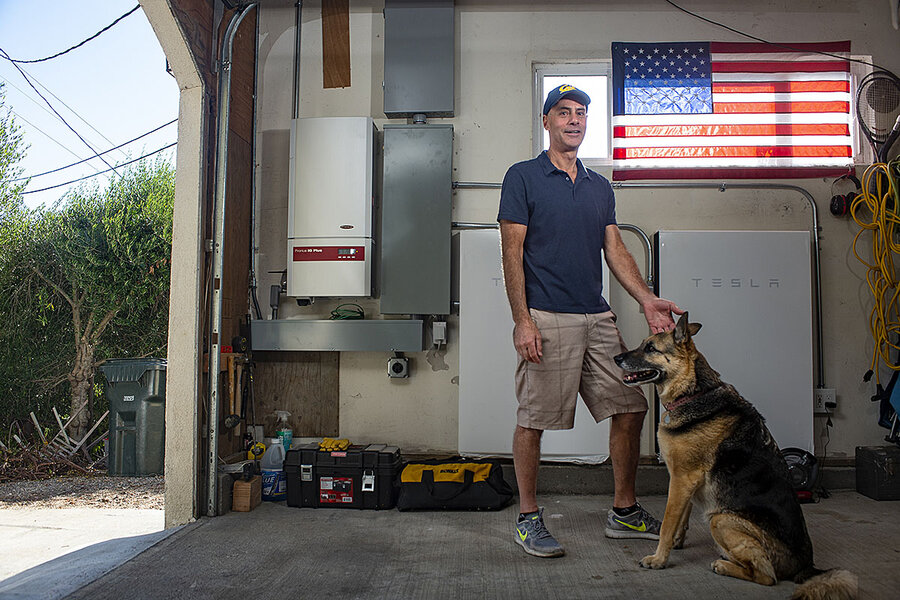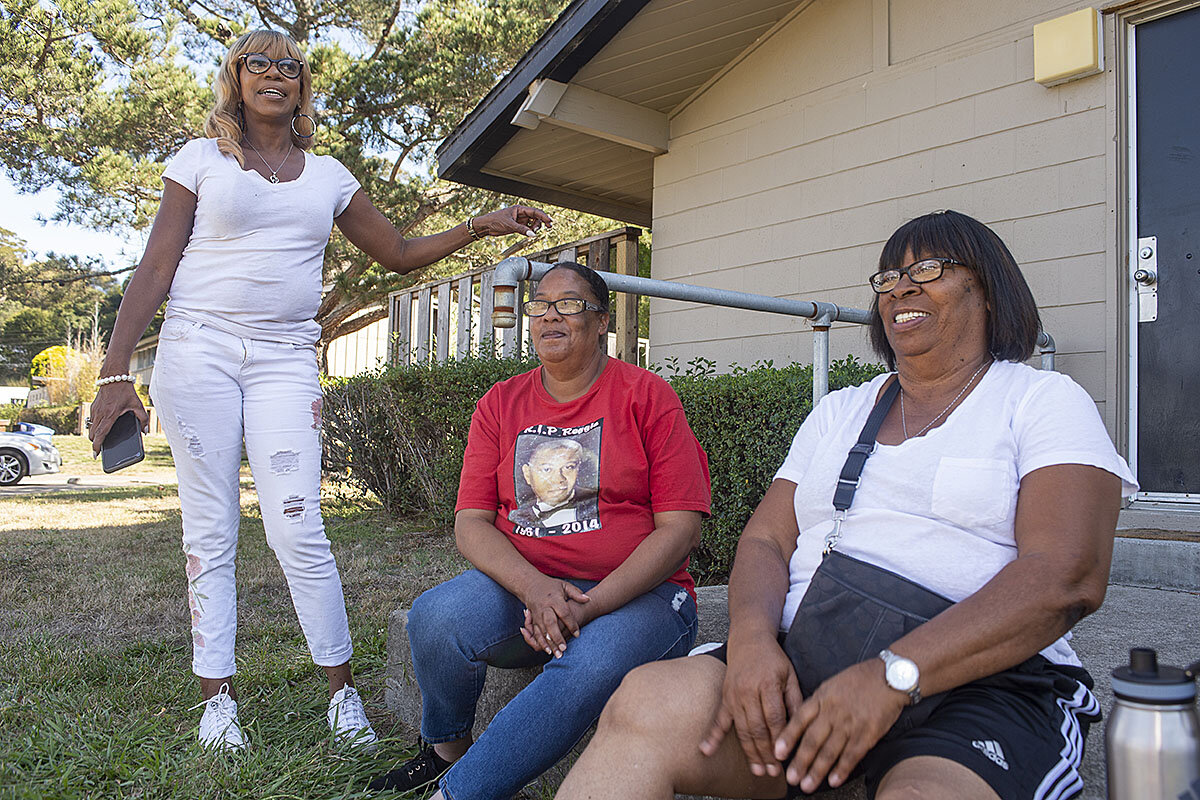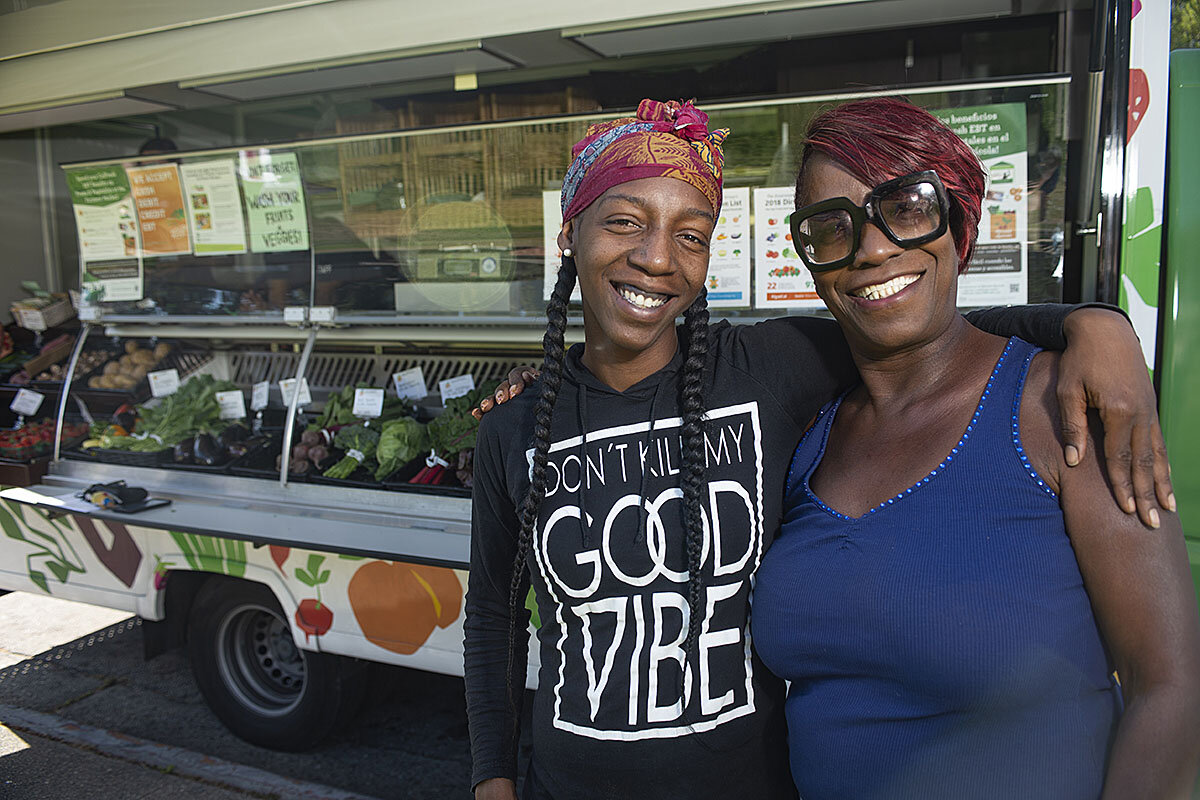California fires: When disaster fans flames of inequality
Loading...
| Mill Valley, California
California is under a state of emergency, ordering evacuations, battling fast-burning fires, and dealing with massive preemptive power outages. It is experienced with the evacuations and firefighting, which is complicated by seasonal high winds. The power outages, on the other hand, are something new here in the northern part of the state.
Around 2 million people lost power over the weekend as the mammoth utility, Pacific Gas & Electric, cut electricity in a planned “public safety power shut-off.” It is the second round of mass outages in less than a month, with another expected on Tuesday.
The utility, which sought bankruptcy protection due to the threat of suits from past fires, calls the outages the “new normal,” necessary to prevent its equipment from sparking a catastrophic fire under high-wind and bone-dry conditions. The fire-season shut-offs, says PG&E, could last a decade as it seeks to modernize its vast network.
Why We Wrote This
Planned power shut-offs may become California’s new normal. If so, that has vast implications for the world’s fifth-largest economy, including exacerbating inequality – even as those with resources work to help their neighbors.
If this is the new normal, it has broad implications for the vitality of the world’s fifth-largest economy – and for the people who live here. A big concern is that the outages will exacerbate inequity in the state. Those who can afford to independently power their homes and businesses with generators and energy-battery storage will do so, while vulnerable populations and mom-and-pop businesses are at risk.
“Rich people in California are going to go in that direction, and the real question is how should we help low-income people respond to this challenge,” says Michael Wara, director of Stanford University’s climate and energy policy program. “People are just beginning to understand the magnitude of the [blackout] impacts.”
The challenge is evident here at the foot of Mount Tamalpais State Park, affectionately known as “Mt. Tam,” just north of San Francisco and the Golden Gate Bridge. In Mill Valley, where Mr. Wara lives, several of his neighbors have solar power, including Jim Budish, who runs an insurance business out of his home.
Unbeknownst to many solar homeowners, however, panels are useless when the power grid goes down. Energy needs to be stored in batteries in order to keep flowing. That’s why, when Mr. Budish began to get notices about the possibility of frequent power outages, he invested in two Tesla batteries.
The batteries, large white panels mounted on the wall inside a garage shared with bikes and surfing body boards, were not cheap. Installation, plus other equipment, came to $17,000, which will be offset by a 25% tax break.
Still, when they got their first test a couple of weeks ago, not even his digital clocks blinked to indicate a temporary outage. He and his wife, who works with him, were able to run their five-bedroom home as before – the lights, the freezer, the pool pump. It worked seamlessly again when the power went out Saturday.
There is one major drawback: He has no internet, which seems to be connected to the grid. He uses his cell phone as a wi-fi “hot spot” but that’s proven unreliable. Without the internet, he headed to San Francisco Monday morning in search of a Starbucks so he could work – the reason he got his Tesla “power wall” in the first place.
Still, his neighbors with solar have been asking about his set-up. In fact, before this latest outage, one visited his garage. “He’s like, ‘How do I get this? Right now?’”
Mr. Budish has energy to spare, and that sparks a question for him: Why can’t he share his extra power with his neighbors – or with those less well-off?
“This may sound a little out of this world,” he ventures, waxing philosophical. “I look at energy that people use in their everyday lives kind of like health care. Everybody should have it. There shouldn’t be someone who doesn’t have power to their home because they can’t afford it.”
“Who can afford to lose food?”
The residents of Marin City couldn’t agree more. Less than a 10-minute drive from Mr. Budish’s house, this community was once a diverse, thriving town that attracted African Americans and others to work in a nearby shipyard in World War II.
When that closed, job and housing discrimination prevented black families from moving. Today, this is a heavily African American, poor community, with no local grocery store, and many residents live in subsidized housing. They are surrounded by some of the highest-priced real estate in the nation.
Last week, women who live in the town’s Golden Gate Village apartments, sitting on the steps of their low-slung apartment houses, shared stories of what it was like when the power went off for the first time earlier that month.
Many people, they said, had just gotten their Supplemental Nutrition Assistance Program money and spent it on groceries. All of the perishables had to be thrown out. The weekly food pantry across the street, run by St. Andrew Presbyterian Church, also closed. Although it’s possible to apply for a food-stamp reimbursement, not everyone knows that.
“Who can afford to lose food? I hate to throw away food,” says Kathy Duquia, who lives on Supplemental Security Income, a federal program designed to help senior citizens, blind people, or people with disabilities who have little to no income.
Even worse was the $807 that Carla Wade had to spend on medicine that needed to be cooled. It was spoiled when her fridge cut off. Neither PG&E nor her health insurance could help her, she says.
“They didn’t give a rat’s tail about us,” says Ms. Duquia.
Unequal cost of disaster
Nationally, studies confirm the inequities of disasters, including after Hurricane Katrina devastated the Gulf in 2005. According to an independent study by the Congressional Research Service, Katrina had a disproportionate effect on minorities and poor people living in the region. “Hurricane Katrina likely made one of the poorest areas of the country even poorer,” the report says.
Mr. Wara says this has come up frequently in the hearings of California Gov. Gavin Newsom’s Commission on Catastrophic Wildfire Cost and Recovery, of which Mr. Wara is a member. After a fire hits and a town has to rebuild, the effects on low-income Californians is “much more severe,” he says. They don’t have insurance. They don’t have living assistance after their home burns.
After a fire, rents get bid up, as they did when Santa Rosa suffered a destructive fire in 2017, he says. That region is again under siege with the Kincade fire, which has burned more than 66,000 acres and caused the evacuation of at least 180,000 people. “It magnifies inequality,” he says.
But rebuilding after a destructive hurricane, fire, or flood is not the same as dealing with widespread blackouts, says California state Sen. Henry Stern. The senator, who represents Malibu, lives in a district that has seen four destructive fires in three years – including the Saddleridge and Tick fires this month. Though not close to the scale of PG&E, Southern California Edison is also practicing public-safety power shut-offs, with about 25,000 customers without power as of Monday morning.
“Nothing is similar to this preemptive, before-the-disaster strikes” situation, the senator says, describing it as a new frontier. “There’s a group of [legislators] who have all been hit by these fires. We’re kind of banging our heads against the wall, to be honest.”
Governor Newsom has put together a new team to help lessen the impact of planned blackouts and announced $75 million for local and state governments to mitigate their effects.
Last week, state Sen. Stern and other lawmakers put out a framework for action that includes an aggressive shift toward community-based solutions that also help the most vulnerable, for whom keeping the power on is a matter of life and death. This includes a rapid move toward “microgrids,” very local sources of power that can run essential services like hospitals, nursing homes, and firehouses. Senators will return from recess to hold a hearing on the issue on Nov. 18.
“In my view, we need to identify everyone who is vulnerable down to a T, whether it is individuals at home or in a nursing facility or getting in-home care,” he says. “They ought to have access to solar and storage or fuel cells.”
Knocking on doors
Simply identifying – and alerting – especially vulnerable individuals is a task in and of itself. In Marin County, officials have found that many more medically fragile people need help beyond PG&E’s list of self-reported “medical baseline” customers who have signed up to receive discount rates and extra alerts about pending power outages.
By declaring a local health emergency at the first big power outage Oct. 9, Marin County health officials gained access to a federal database of Medicare patients who rely on equipment such as ventilators that need power to work. PG&E’s list reported 211 customers in need; the federal list had 324 – and even that was incomplete.
The county sent a team of seven student nurses, plus an emergency medical technician for oversight, to knock on doors of the “medically fragile” people on the federal list.
That door-knocking is the kind of community effort that Californians are adopting while politicians, regulators, utilities, and the private sector work toward more permanent solutions.
In Marin City, a group of community leaders organized a public barbecue at the town park during the first prescribed blackout – just in time for the return of power to turn the event into a celebration. Charging stations, where residents can power cell phones, laptops, and even electric generators, have been available during both outages.
Mr. Budish, meanwhile, loaned his gas generator to his neighbor across the street, ran an extension cord to his side neighbor, and offered his freezer to people who might need it.
Mr. Stern says that in his district, churches are figuring out who in their congregation needs special help, phone trees are being activated, and grandchildren are checking on grandparents.
The shut-downs have become a “civic engagement trigger that’s very different from how we live our lives, tucked away in our own homes, on our iPhones with Amazon, where you don’t need to know your neighbor.”
Now, he says, people are being forced to get to know their neighbors – no matter who they voted for – and find out if they are OK.









